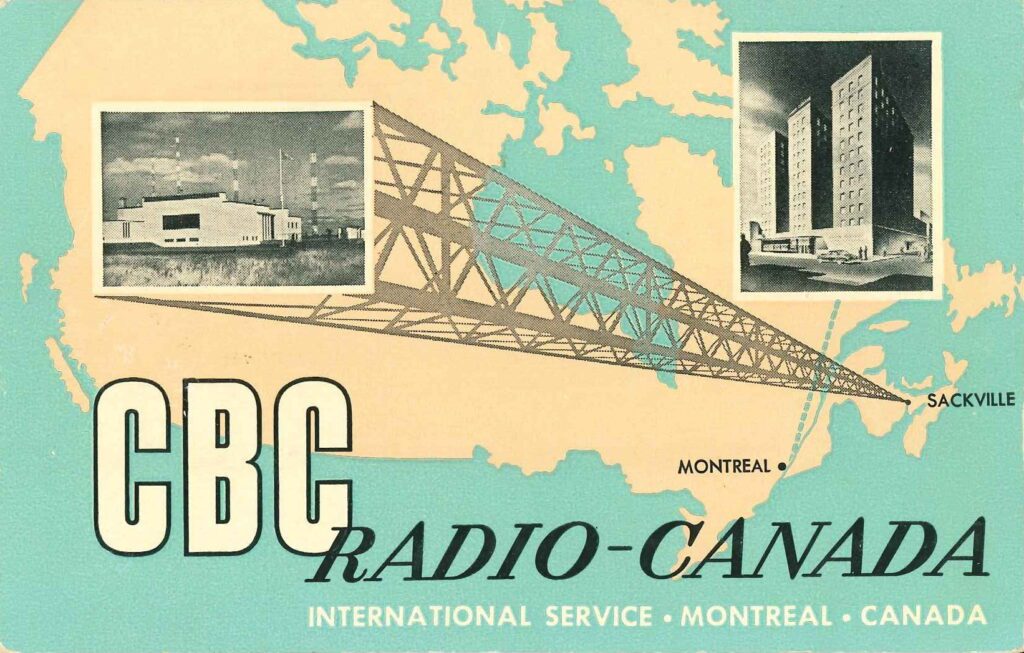“A democracy cannot be both ignorant and free.” Thomas Jefferson.
“Parliament and the public cannot hope to call the Government to account without an adequate knowledge of what is going on; nor can they hope to participate in the decision-making process and contribute their talents to the formation of policy and legislation if that process is hidden from view.” The Supreme Court of Canada in a case called Dagg.
There are thousands of unlicensed medical doctors in Canada despite a doctor shortage which is having painful and even deadly consequences to Canadians.
The Canadian Medical Association published a study by Deloitte which found that at least 4000 Canadians died due to delayed access to healthcare in 2021. Some physicians claim that this is the tip of the iceberg as data collection systems in Canada are not set up to determine “delayed access to healthcare” as a cause of death, at least not transparently. Deaths on waiting lists are not collected transparently or at all. Statistics reported by Aaron Gunn in a documentary called “Waiting to Die” provide further important context.
How and why did we get here?
In the early 1990s the provincial governments of Canada became concerned about healthcare affordability. Using the Barer-Stoddart Report as an inspiration, the provinces developed a policy to control healthcare spending by limiting the number of licensed physicians—limiting the number of licensed physicians rations public access to healthcare which controls healthcare spending.
Before this restraint on licensing of physicians was introduced all Canadians (Canadians born and/or raised in Canada who chose to study abroad; immigrant and refugee physicians who obtained their medical degrees in their country of origin; and Canadians who graduated from Canadian medical schools—all of whom are referred to throughout this paper as “Canadians”)—regardless of place of graduation– were entitled to compete to work for any and all entry level jobs (called “intern” or “residency” positions) they needed to become licensed. The training programs for these positions were administered by hospitals and by university Faculties of Medicine. Heads of hospital departments and their selection committees had the latitude to pick the Canadian who had the knowledge, skills, and characteristics best suited to that medical discipline, regardless of place of graduation.
This changed in the early 1990s when the provinces implemented the restraint policy related to licensing physicians. Medical school seats were reduced. Residency training positions which are a pre-requisite to licensing for all new medical graduates and immigrant physicians from most countries were also reduced. This reduction created concerns for the Faculties of Medicine across Canada who wanted to ensure that their graduates could access the residency training jobs they needed to become licensed physicians. At this same time the medical regulating bodies across Canada discontinued hospital administrated training programs and gave the Faculties the exclusive right to select and administer the resident physician program. The Faculties immediately this new position of power to protect residency positions for their graduates to the exclusion of Canadians who were graduates of international medical schools (IMGs). Under the new rules, the bottom of a Canadian medical school class had a better chance of becoming a surgeon in Canada than a Canadian who graduated from Oxford or a surgeon who immigrated to Canada– even if that surgeon was reputed as one of the best surgeons in the world.
The provincial regulatory authorities (Colleges of Physicians and Surgeons) and the Ministries of Health who have an obligation to ensure that licensing is open to all Canadians based on competence turned a blind eye to this discrimination against internationally educated Canadians.
As a result, as of the early 1990s access to medical licensure was governed by interests outside the public interest. The Ministries were able to control the number of licensed physicians by declaring themselves the sole funder of resident physician positions for non-military Canadians. The Faculties of Medicine were able to ensure that their graduates became the doctors of Canada which increased their prestige and their power. The Faculties were able to educate and enculture their graduates to believe in their entitlement to be licensed without competition from other qualified Canadians who were international educated. Fewer licensed doctors allowed physician organizations to bargain more effectively for higher remuneration. The public interest was harmed as the ethical pillars upon which Canada was founded were compromised, particularly the principles of equal opportunity and freedom. The public was harmed by the lack of competition to willow out the non-bloomers amongst Canadian medical school graduates and the failure to license outstanding Canadian physicians trained in other countries. And the public interest was especially harmed as the restraints on licensing physicians would make access to healthcare more and more difficult with each passing year.
When an IMG filed a claim that he was being denied his constitutional rights as a new Canadian in 2005, the Faculties of Medicine took a pro-active approach to silence. They proposed, and the Ministries of the provinces agreed, that two streams be created so Canadian IMGs had some opportunity to access residency positions which are a pre-requisite to being licensed. Graduates of Canadian medical schools (CMGs) would have more positions than graduates in their stream. Conversely, the IMG Stream would be subject to a quota which was a small fraction of the number of qualified Canadian IMG applicants. The IMG Stream was and continues to be comprised mostly of positions in the lower paid and less desirable medical disciplines. Equal opportunity was not the goal. The goal was to give Canadian IMGs something to silence at least temporarily their cries of unfair exclusion.
To justify the marginalization of IMG physicians, a narrative was developed. The narrative plays on the long-standing prejudice against immigrants and devaluation of their credentials. The narrative propounded by provincial governments and the organizations that benefit from limiting the number of physicians through IMG exclusion is that IMGs are denied access to licensure because of lack of “credential recognition” and “public safety”.
In reality assessments such as the Medical Council of Canada Qualifying Examination Part 1 and the National Assessment Collaboration Objective Structured Clinical Examination can and do determine whether an international medical graduate has the critical medical knowledge, decision-making ability, and clinical skills expected of a graduate of a Canadian medical school. Each year more than 1000 qualified Canadian IMGs apply and are denied jobs as resident physicians. There are literally tens of thousands of IMGs currently in Canada who have proven their credentials. In addition to these exams, there are 12-week Practice Ready Assessments which are designed to determine whether an IMG is competent to practice in Canada.
Stats Canada reports that there are 39,000 internationally educated doctors currently in Canada. The most optimistic data from Stats Canada is that 41.1% of these have been licensed.
Despite Canadians being told by their premiers that they are committed to addressing the physician shortage, and licensing more IMGs, a critical review demonstrates that the policy of restricting the number of physicians remains in place, although some of the provinces are attempting to loosen the restrictions.
The provinces have promised more residency positions. But today there remains a quota on resident physician jobs for Canadian IMGs. In 2013 the quota for training Canadian IMGs for all of Canada was 348. In 2023, Canada’s quota has increased by 22 to 370. There are 17 Faculties of Medicine in Canada. If averaged over the 17 Faculties, this is an increase of 1.29 per Faculty in ten years. For context, in this ten-year period, the population of Canada increased by 5 million people. In 2013 there were 4.1 million Canadians without a family doctor according to Stats Canada. In 2023, that number had grown to 6.5 million. For a B.C. perspective as of 2023, there are approximately one million British Columbians without a family doctor. Doctors at Surrey Memorial Hospital, one of the busiest in the province, issued a public letter this year warning of “unsafe conditions and adverse outcomes. British Columbians have died because of closed emergency departments due to inability to staff. And although there has been an increase of positions for CMGs in the last two years, since 2016 to and including 2023 the number of training positions for Canadian IMGs has been fixed at 58.
The provinces state they are implementing or increasing Practice Ready Assessments for IMGs. But barriers are built into the eligibility criteria. For example, the requirement of recency of practice serves as a barrier. The time limit set since one last practiced is often less than the time it takes to immigrate and take the qualification examinations/assessments. There are also criteria which have no demonstrated scientific relevance in determining competence such as length of residency training. Even though the purpose of residency training is to get experience prior to being fully licensed, the time one practiced independently is not considered in this context.
Even when physicians come from approved jurisdiction countries such as the United Kingdom, Ireland, and Australia, there are numerous obstacles, delays, and costs. CBC recently reported on an IMG Canadian practicing as a family physician in Australia because of the barriers imposed on IMGs in accessing residency training here. Her mother, also a family physician, wanted to retire but did not want to abandon her patients so convinced her to try to come home. More than one year after she had begun the application to come home, she was still waiting for the Medical Council to process her credentials.
Examinations for doctors from these approved jurisdictions are another huge barrier. It is common ground that practicing physicians practicing in Canada would not be able to pass these exams. A recent survey by SOCASMA showed that the majority of exam takers did not believe the exam questions were relevant and appropriate to assessing readiness to enter independent practice. Further, these exams are almost impossible to pass without past exam questions which are collected and circulated among graduates of Canadian medical schools. This invaluable resource is not readily available to Canadian IMGs who trained outside of Canada, mostly in Australia and the USA, who want to come home to work. The validity of the Royal College scoring on certification exams is currently under attack and before the Ontario courts. Months of study is required for these exams which is something not conducive to most experienced IMG physicians with families. The cost for the exams is approximately $10,000.
The number of Canadian IMG applicants to Canadian residency and for licensure is dropping as Canada is viewed as a licensing unfriendly jurisdiction around the world. This reputation is not only well-deserved, but the intended and predictable consequence of the provinces’ policy to restrain licensing of IMGs beyond those educated in Canada for the purpose of rationing healthcare and controlling healthcare spending.
Before closing, it is important to note that Canada is not where it is because of underspending. The Fraser Institute reported “Despite being the second-highest spender (11.3 per cent as a percentage of GDP), Canada’s health-care system routinely delivered mixed to poor performance compared to our international peers.” Germany is a high to mid performer who spends essentially the same amount on universal health care as Canada with twice the population. Germany has 4.25 physicians per 1000 population compared to our 2.7. Germany has more family physicians, more specialists, more acute care beds, more psychiatric beds, and far surpasses Canada in its inventory of diagnostic equipment. Where Canada excels is in administration: Canada has ten times the number of administrators per capita as Germany. While other countries license physicians and allow them to do their work, the current fiscal management policy of the provinces involves hiring administrators who mandate restrictions on medical practice, as well as reporting and administrative requirements on physicians. These impositions reduce the time a physician has to treat patients. This micro-management and the emotional toll of having to say no to new patients and helplessly watching existing patients suffer and die on long waiting lists takes a toll on physicians. Stats Canada reported that many physicians, particularly young ones, are burned out and intend to change jobs.
Society for Canadians Studying Medicine Abroad (SOCASMA) is a non-profit organization which advocates for Canadians from across Canada who chose to study medicine abroad but who face tremendous barriers which prevents them from being licensed to practice even after meeting the Canadian standard for medical education. Most are forced to leave Canada to work as doctors. We also support and advocate for immigrant physicians who have come to Canada and face the same hurdles as Canadians who study abroad. SOCASMA believes that after a person has been given immigration status in Canada, they are entitled to the same benefits and opportunities as all other Canadians.
All content on this website is copyrighted, and cannot be republished or reproduced without permission.
Share this article!




The truth does not fear investigation.
You can help support Dominion Review!
Dominion Review is entirely funded by readers. I am proud to publish hard-hitting columns and in-depth journalism with no paywall, no government grants, and no deference to political correctness and prevailing orthodoxies. If you appreciate this publication and want to help it grow and provide novel and dissenting perspectives to more Canadians, consider subscribing on Patreon for $5/month.
- Riley Donovan, editor